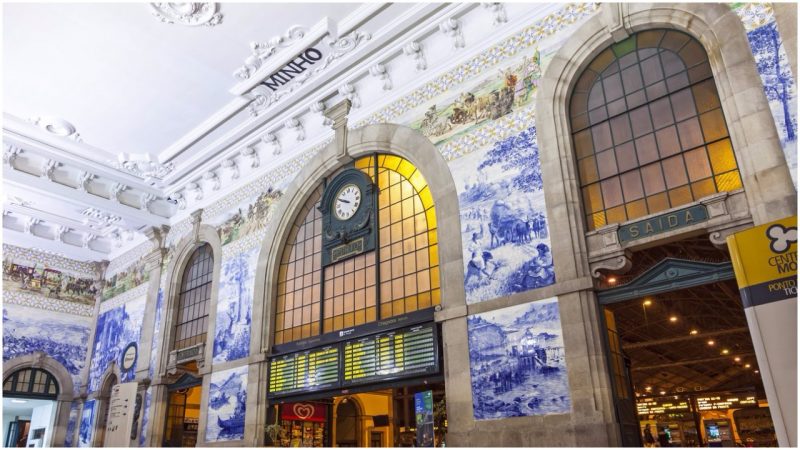Among the many beautiful things to see in the Portuguese city of Porto, the São Bento train station is a standout. It has gained particular attention for the elaborately painted azulejo ceramic tiles on its walls. Located in the city center, this transportation hub is the work of the architect José Marques da Silva.
He was heavily influenced by the 19th century architecture of Paris, particularly the Beaux-Arts style, which is evident in the stone façade and mansard roof. Porto’s famous architect, da Silva, followed the principles of neoclassical style practiced at the École des Beaux-Arts in Paris, creating a geometric, U-shaped building. It is three-stories high with a symmetrically designed façade turned to the southwest.
The station was built on the site of a 16th century Benedictine monastery, the Convent of São Bento da Avé Maria, after which it was named (São Bento is the Portuguese Saint Benedict). The monastery was partly destroyed in 1783 by fire, later to be reconstructed.
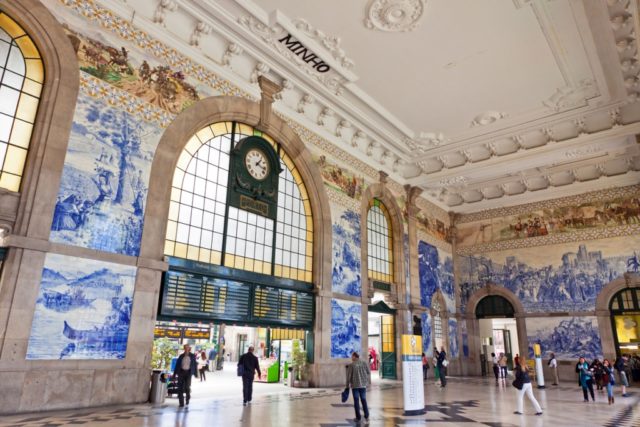
Fifty-five nuns lived there in 1821, although they were the last of their order because of the decree made in 1834 by Joaquim António da Aguiar ordering the extinction of all male orders and prohibiting new nuns from taking vows. (He was known as “the monks killer.”) It took a long time for the last nun to die, as the convent received no money and the government waited impatiently. She finally passed away in 1892.
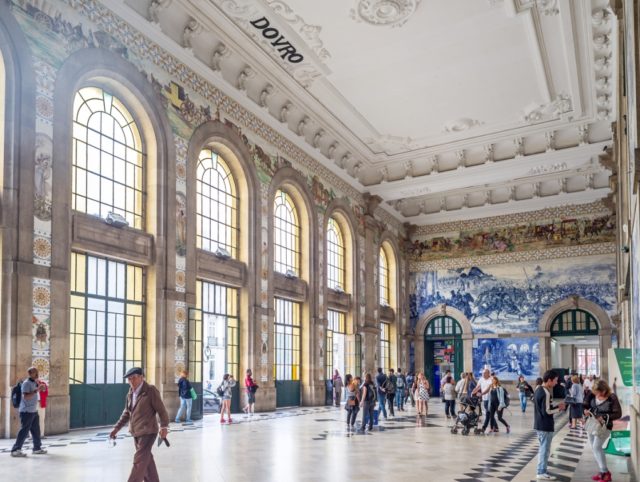
The building was swiftly torn down and trains began to stop there, the first one in 1896. The first stone was officially laid in 1900.
But the ghost of that last nun is said to haunt the hallways of the train station to this day, and her gentle prayers can sometimes be heard by those who walk through the station.
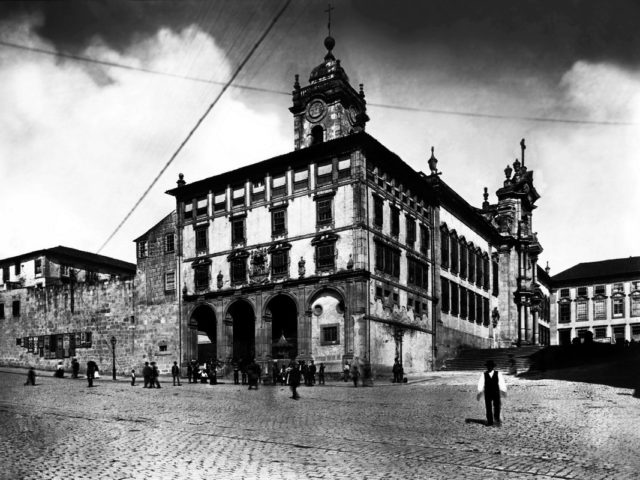
In 1905, the artist Jorge Colaço began his 11-year project of painting the azujelo tiles in the main hall, on which he worked until 1915. Colaço was a Portuguese artist born in Tangier, Morocco. The São Bento hall is one of his most famous works. He mostly worked in the medium of azulejo panels. The technique of azujelo is a method of painting tin-glazed ceramic tiles specific to Spain and Portugal, which began in the 13th century. It was derived from the Moroccan zellige, the traditional handcraft of ornamental tilework that itself initially imitated a form of a mosaic.
In addition to being an ornamental art, azulejo controls the temperatures inside houses. There is a practice of decorating both the interior and exterior that spread all over previous Portuguese and Spanish colonies. The painted themes and subjects are usually taken from Portuguese history and culture–representing the events most crucial to the formation and development of the Portuguese national identity.
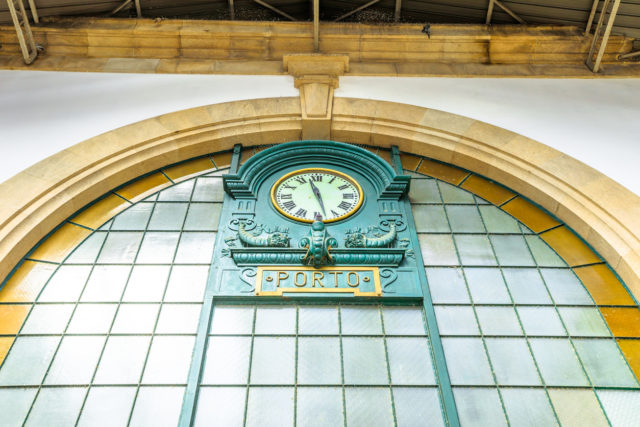
The vestibule at the São Bento station is covered with 20,000 blue-and-white tiles picturing some important events in Portuguese history and the foundations of the city of Porto. A golden, yellow, and blue frieze embellished with flowers is located above the tile paintings and near the ceiling. The tiles inside the frame of the frieze are painted in many different colors and usually render scenes from the history of transportation in Portugal. Underneath it are the monochromatic blue-and-white azulejo tiles. Every composition is framed in the granite lines of the atrium.
The panels are divided into central ones with epic scenes and smaller ones picturing domestic activities located underneath. Two of the most important historical events on the large panels are the Conquest of Ceuta and the Battle of Arcos de Valdevez. The Battle of Valdevez between the forces of the Kingdom of Portugal and Kingdom of León happened in 1140 or 1141. It was an important Portuguese victory that marked the end of the first war for independence.
The Conquest of Ceuta, on the other hand, signifies the starting point of Portuguese colonial expansion in Africa beginning in 1415, when they subjugated Ceuta, a city in contemporary Morocco. It was an important strategic point in fighting with the Moors. Jorge Colaço also depicted newlywed King John I and Philippa of Lancaster entering Porto, and the meeting of Alfonso VII of León and the knight Egas Moniz in the midst of the siege of Guimarães.
The smaller panels render moments in everyday life, such as the scenes of harvest, wine shipment, work at the watermill and the vineyards, cattle fair, and a pilgrim camp.
